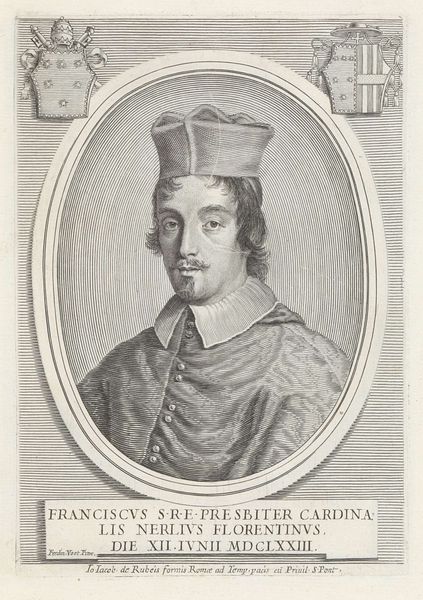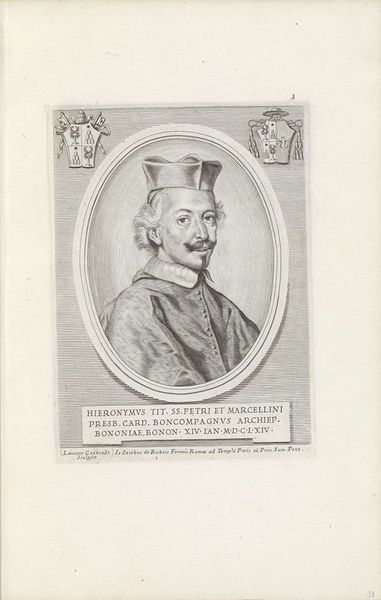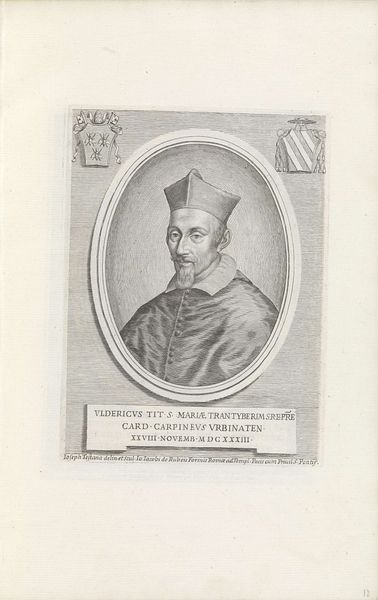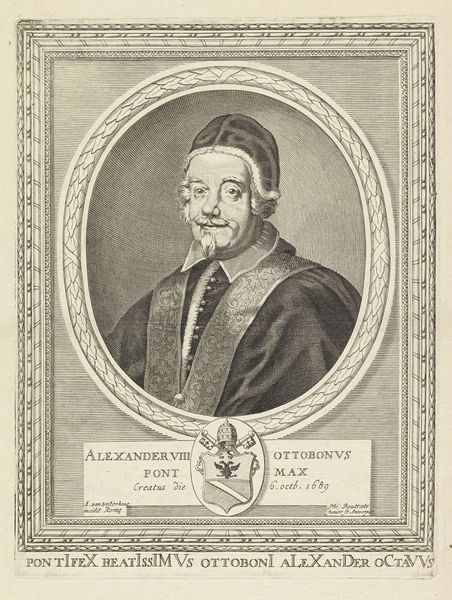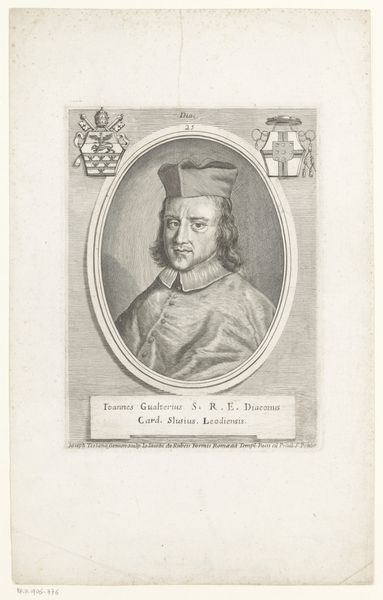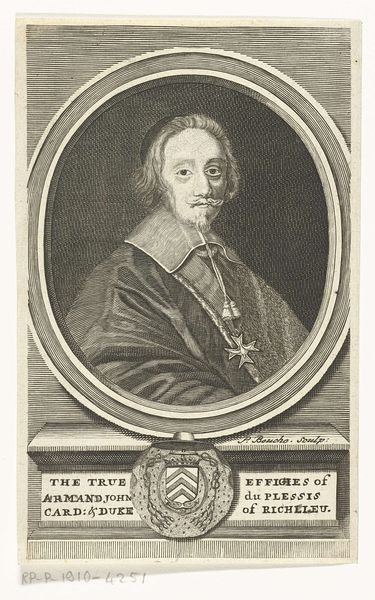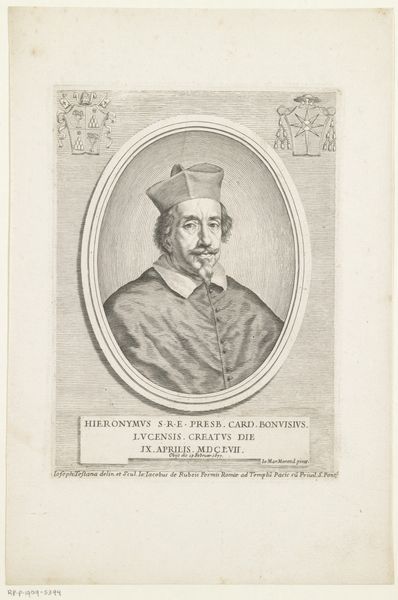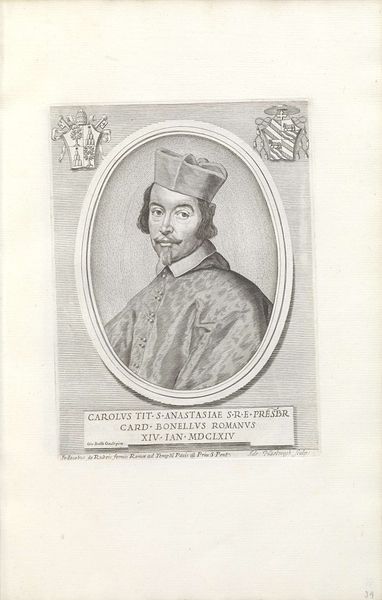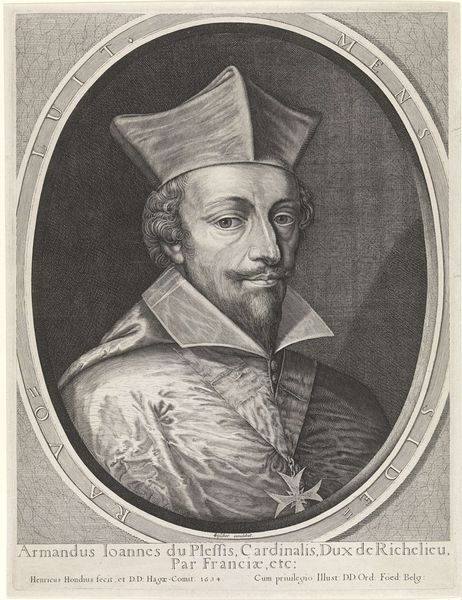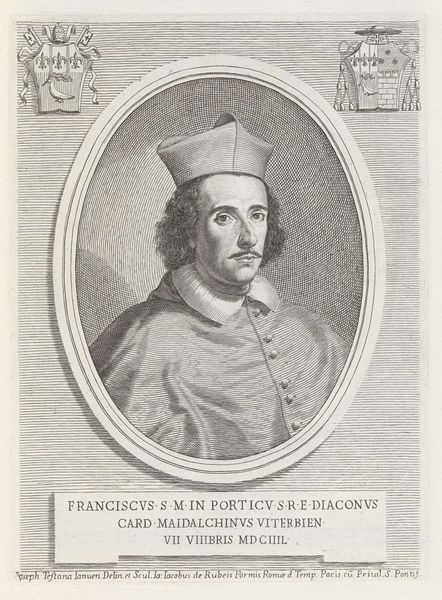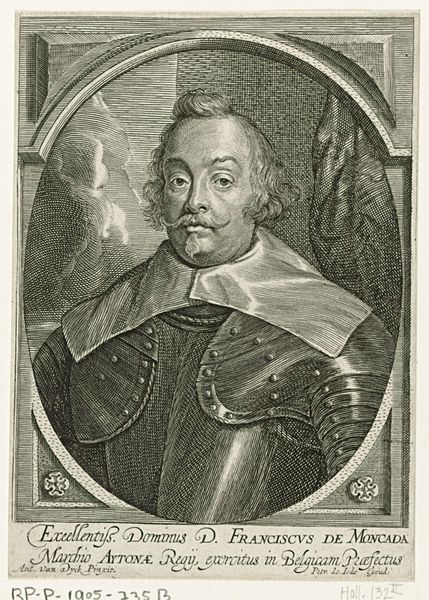
engraving
#
portrait
#
baroque
#
old engraving style
#
archive photography
#
historical photography
#
history-painting
#
engraving
Dimensions: height 198 mm, width 146 mm
Copyright: Rijks Museum: Open Domain
Curator: Immediately, I notice the precision of the engraving—the sheer skill in rendering the textures of fabric and skin with such delicate lines. Editor: Indeed! This is a print of Albertus Clouwet's "Portret van kardinaal Bernhard Gustave von Baden-Durlach," dating back to between 1671 and 1679. As you mentioned, it exemplifies Baroque engraving. Curator: Knowing it's an engraving focuses my attention on the process. Consider the tools and the labor involved! Each line is deliberate, a testament to the engraver’s patience and the economic value placed on such skilled work. This wasn’t just artistic expression; it was a form of production tied to social status. Editor: Absolutely, and we must also acknowledge its context. This portrait played a part in solidifying the Cardinal's image and reinforcing the power structures of the Catholic Church and his noble family. Engravings like these circulated widely, shaping public perception and bolstering authority. The coats of arms flanking the portrait further cement his identity and lineage. Curator: Looking closely, the variations in line thickness really show the skill of the maker. From a technical perspective, how were these portraits originally made? Editor: Prints like these, published and sold widely, made images of powerful figures accessible to a broad audience. We should examine the social mechanisms and the role of these widely spread portraits to understand the perception of political figures in early modern society. The act of replicating portraits serves political functions of spreading power. Curator: I find myself fascinated by the interplay between artistic skill and the material constraints. How did the engraver adapt to the demands of the commission and the limitations of the medium? The commercial success of the image underscores a specific aesthetic taste within a particular market, where visual likeness, skillful craftsmanship, and political messaging converged. Editor: And the historical reach is compelling, thinking about its production as an economic venture that also bolstered specific historical powers—it really offers unique avenues for understanding both society and power. Curator: Indeed. Considering the material, and labor really opened the social avenues in this work. Editor: It is fascinating how exploring one aspect often enhances another.
Comments
No comments
Be the first to comment and join the conversation on the ultimate creative platform.
